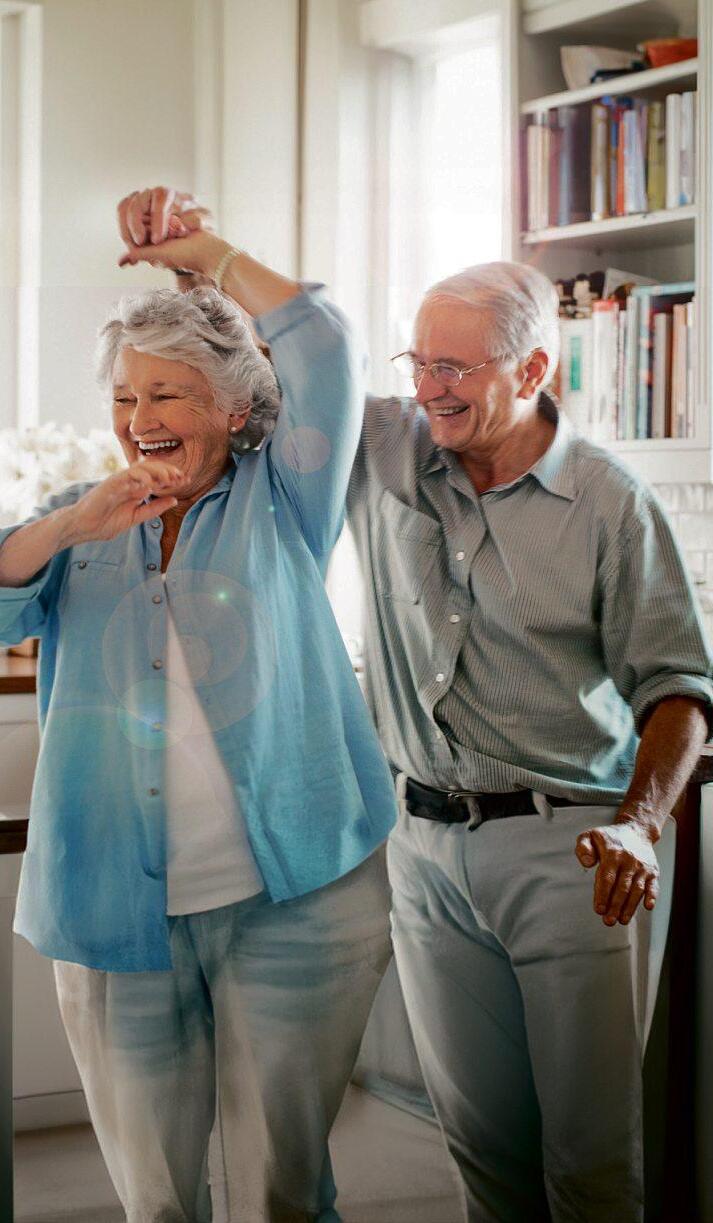
















Though this most recent New England winter wasn’t overly severe, generally thoughts are lighter and more optimistic with the herald of spring.
Birds generally use this time for “nesting,” which quite literally means preparing a proper home for them to lay and hatch their eggs The nest is also a protective place for them to raise their young.
We humans are not immune to this spring practice, as moms-to-be often enter their own nesting phase, either with spring’s arrival or close to their due date. They find the instinct to clean and declutter increasing. But the springtime instinct to renew and revive our home spaces is not limited to those expecting new arrivals For most of us, decluttering and cleaning has a positive impact both physically and mentally. For seniors, it can be an even more important practice.
Dependingonage,there are varied benefits to springcleaning. Safety: Formoreactiveseniors, springcleaningisagreat wayto mentally andphysicallytakeinventory of what we have versus what we need.It’sagoodtimeto make sure we have emergencysupplies like lightbulbs andbatteries.It is also agoodway to declutter spaces wherewemay notrealize wireshavedegraded, or papers and flammablematerialmight be a fire hazard.
Forolder seniors, it’s agoodtime forfamilymembers to chip in for theclean up as clutteredhallways andwalkwayscould lead to a fall.Also, if cleaning andlaundry begintopileup, it is even harder to catchupfor someonewithmobility issues
Organization: Spring cleanupis agoodopportunity to go through importantpapersfor yourself or your property,and make sure they’re filedawayfor easy access if needed.Documents like wills, birth certificates, social security cards, mortgage records, homedeeds, cartitles, bank accounts,medical records, andmorecan getlostin clutter.
Mentalbenefits: Thereisa psychologicalimpactfromhaving one’shomeclean,decluttered,and organized. According to ClosetAmerica,amaker of custom closets, a clutteredhomeimpacts ourpsyche in avariety of ways:
•Itdistracts us.The weight of worrying aboutcleaningupoverstresses ourbrain.
•Itmakes it hard to relax. Knowingthatweneedtocomplete tasksimpedes relaxation
•Guilt.Wefeelguiltyfor being unable to getorganized.
•Our brain’sfunctionisaffected. Research hasshown,whenclutter is present, theimpactcausesour braintobeunabletoprocess.
Outdoorspaces: Spring cleaning doesn’talwaysjustapply to indoor spaces.There canbehealthand safety impactstoour outdoors beingcluttered.InNew England, harshwinterwinds tend to rip down branches andcould damage to ouroutdoor features.Itishelpful to take asurveyofthe yard to make sure your spaceisclean andsafe. This is anotheropportunity for family to step in HELP
In Connecticut, if your outdoors needssprucing, AgeWellCT reports that Habitatfor Humanity offersaidefor seniorswho own theirown home andfallwithina certainincomebracket.
Habitatfor Humanity’s Spring Clean-Upprogram helpsolder adultswithyardwork, home maintenance, andother tasksduringthe springseason. Services caninclude: leaf raking,clearingout branches anddebris, pruninghedges, cleaningout flower beds,and walkways
This year,SpringClean Up Days willbeheldthrough May2.To view qualificationsand apply, visit here.
ConnecticutIn-Home Care notes theimportanceofspringcleaning. Theirin-home assistance forseniors caninclude lighthousekeeping.
“Maintaining aclean spaceisextremelyimportant forseniors who want to continue living at home,” the site says.
Formoreinformation,contact ConnecticutIn-Home Assistance at(855) 412-2273.
Also,individualtowns in CT might offer specificsenior-related assistance with spring cleaning on a case-by-casebasis.InNew Milford, forexample,the town offersa “chore service” forseniors.The missionistoassistseniors “with lightchoresworksothattheyare abletoremainlivingindependently andwithdignity at home.”
Examples of such chores include trimming hedges,rakingleaves,
“Connecticut In-HomeCarenotes the importance of spring cleaning.Their in-homeassistancefor seniorscan includelight housekeeping.”
weedingthe garden,washing windows,springcleaning, decluttering, rearrangingfurniture,changing lightbulbs,oreventightening screws.The WesternConnecticut Area Agency on Agingalsooffers adatabaseofareachore hotlines here.
TheInstitute on Agingoffersa series of tips to getstarted with a springcleaningproject:
Planwell: Gather your support team before youdecidetoget startedand writedownyourplan of attack.Set goalssuchasdeep cleaning thebathroom, andthen
prioritize your goals.
Invitefriendsandfamily: Even forthose over50withnophysicalimpairments,awide-ranging spring-cleaning jobcan be overwhelming.Invitefriends andfamily whomay offer to help.Inviteyour kids to help,and they may find a childhoodtreasuretotakehome. Just make sure,ifyou can, to provide food anddrink to thankyour helpers.
Delegate: Once youhaveassembled your team,tobeeffective,itis importanttodelegateduties—as much as it canbehardtorelinquish control.
Paperwork: As mentionedabove, loosepapersshouldbeexamined before beingtossed, andimportant papers should be organizedfor easy access.
Improvehomesafety: Oneofthe goalsthatshouldbeofhighpriority foryourspringcleaningistomake theend result be asafer home.This couldmeanremovingthingsthat couldbetripped over,makingsure rugs aresecurelyonthe ground, tossingexpired medications, and more.Tofurther ensure that the home is safe,the InstituteonAging offersahomesafetychecklist at ioaging.org/activities-wellness. Spring cleaning,whether indoor or outdoor, is good forthe mind andbody–and forusall.It’sa reminder that thereare sunnier days on thehorizon –and what better to view them from than a freshly-scrubbed window?

“HomeHelpershas provided exceptional assistance forthe changing needs of my aging parents.”
•From1 Hour to 24/7, and Live-in Assistance
•Vetted, Background-CheckedAides
•Best of HomeCareTM Provider of Choice forthe past 8Years
• Highest Review Ratings on Google
• Quality YouCan Trust




Property taxes in Connecticut can be daunting, but for some older or disable residents, the state offers some assistance But the window to apply is now.
The state provides a property tax credit for eligible Connecticut homeowners for those over 65, some disabled and some veterans pending certain qualifications. Incomes must not exceed certain limits
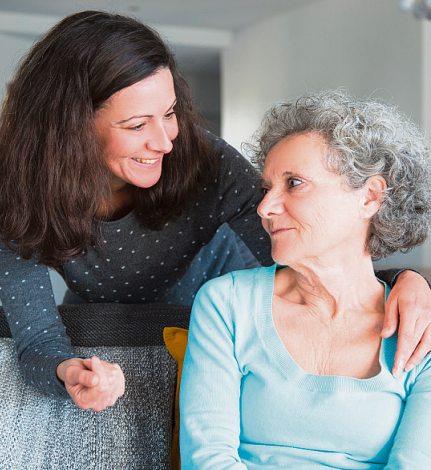

Those credits can be up to $,1250 for couples and $1,000 for seniors. Connecticut property taxes are determined by each individual town’s mill rate.
A mill is equal to $1.00 of tax for each $1,000 of assessment To calculate the property tax, multiply the assessment of the property by the mill rate and divide by 1,000. For example, a property with an assessed value of $50,000 located in a municipality with a mill rate of 20 mills would have a property tax bill of $1,000 per year.
The mill rate is determined by dividing the grand levy by the grand list In Connecticut, property tax rates are expressed in mills, or thousandths of a dollar. CT is listed by Rocket Mortgage as 47th in a list of lowest to highest property tax rates, with an average tax of about $6,200. These taxes can burden those with limited income.
There is an extensive list of requirements for eligibility on the state’s website, but below is a summary of general guidelines.
• The Recipient or spouse must be 65 years of age or older or be 50 years of age or older and the surviving spouse of a homeowner who at the time his death had qualified and was entitled to tax relief provided such spouse was domiciled with such homeowner at the time of his death.
• Or 18 years of age or older and permanently and totally disabled and receiving benefits under a federal, state, or local retirement program which contains requirements comparable to those of the Social Security Administration
• Must meet residency of at least 6 months and one day for the program year requirement.
Read more on eligibility at portal ct.gov
Owners’ 2023 total income must not exceed $43,800 for unmarried persons, and $53,400 for a married couple “Qualifying income” is defined as all taxable and nontaxable income. This definition includes taxable income as may be reported for Federal Income Tax purposes, as well as non-taxable
income All monies received are to be considered part of qualifying income, unless specifically exempted.
In the guideline booklet, various examples of income that will be included in total are listed, with examples such as a severance, unemployment, lottery winnings, rental income, and more
The state also offers honorably discharged veterans a general $1,000 property tax exemption who have actively served 90 days during war time or their survivors.
The state also offers additional exemptions for veterans and disabled veterans who qualify for the basic exemption. The deadline for filing for the state’s exemption for veterans is Oct. 1. The forms and more info can be found here: portal.ct.gov.
In some cases, the town or municipality of CT in which you reside can offer its own additional exemptions or credits for those over 65, the disabled and veterans.
The town of Darien, for example, offers its own senior tax abatement and veteran tax credit. The town of Ridgefield also has a senior tax credit If you are unsure if you qualify, please visit your town’s social services department or tax department for guidance.
The application process for filing a tax relief form with the state is active now – the deadline is May 15 For more information, more detailed eligibility, the forms needed and more, visit Homeowners Elderly Disabled Circuit Breaker Tax Relief Program (ct.gov)




As we and our loved ones age, discussions come up to adapt our day-to-day lives to changing needs and wants. This could include where we live Changes to where we or our loved ones choose to live can be based on a variety of factors:
• Children grow older and leave an empty nest, so a costly larger home may no longer be necessary.
• With retirement possibly on the horizon, the cost of maintaining a larger home and property may no longer be financially desirable or feasible.
• Physical impairments may also make living in a larger home with a larger property difficult, be it lawn maintenance, snow removal, or scaling stairways.
• The desire to move closer to children and grandchildren.
• Health issues may make living alone riskier.
There are several options for those choosing to relocate at a later age. For those who are in good health and seeking a lower maintenance lifestyle, Connecticut has some of the best-rated senior living communities.
An additional benefit of these communities is they are often equipped with memory centers and assisted living on site, as well as rehab services This means that should your independent living status change, there is no need to completely relocate.
These places are also good options for those who need more assistance on a daily basis. Services can include meal delivery, daily health checks, laundry and turn down service, help with bathing, and more. Another positive with senior living communities is the camaraderie with others, many social and educational programs, on-site exercise and sometimes pools, and more
They are often equipped with skilled chefs who create healthy and varied food items. Some also offer on-site shops, transport to local destinations, community gardens, tennis, putting ranges, and more.
Another option for those looking to downsize and move closer to family is to move in with that family, but perhaps both parties wish to maintain their privacy and personal space. A solution to that dilemma is a “granny pod,” or an accessory dwelling unit (ADU).
‘granny pods:’ IN CT, MICRO HOUSES CAN BE A GOOD OPTION FOR SENIOR LIVINGBy Susan Shultz
As of Jan. 1, 2022, Connecticut legislators passed House Bill 6107, an act concerning the Zoning Enabling Act, accessory apartments, training for certain land use officials, municipal affordable housing plans, and a commission on Connecticut’s development and future.
According to an announcement from House Democrats at the time, this bill was considered a “needed step in increasing affordable housing so that people such as students, retirees, empty-nesters, and town workers can afford to live in our district.”
The law made it permissible for housing such as garage apartments, in-law suites, or “granny pods” to be constructed and leased to family or other tenants in residential and single-family areas, provided they are appropriate to the scale and architecture of the town.
The bill included the option for municipalities to “opt out” of the zoning requirement if they filed before Jan. 1, 2023
Are your clients concerned about theirlegacy? th y leg ir c rn c
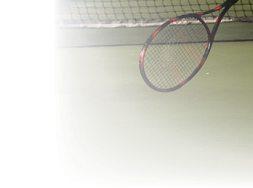


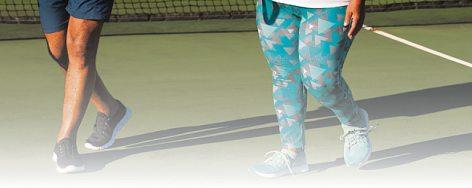
Wealth Management,Comprehensive Trust, and Estate Services.DoneLocally. TrustinDime.
It’s your bank.Yourchoice.YourDime.
dime-bank.com• 860.859.4300 • Colchester| Glastonbury |Manchester| Vernon

While its often viewed as a sweet emblem of love, it bears a much more significant role in reality. One of the most important, if not the most important, organ in the body is our heart. For example, those over the age of 65 can be more at risk for heart disease or a heart attack.
According to the National





 By Susan Shultz
By Susan Shultz
Institute on Aging, age impacts the functionality of the heart in several ways:
• Your heart can’t beat as fast during physical activity
• Heart disease can be caused by a build up of fatty deposits in the arteries
• A stiffness or hardening of the arteries, called arteriosclerosis, can lead to high blood pressure
• Age can also cause arrhythmia, or an irregular heartbeat
Signs of heart disease
The NIA reports several signs that mean you should check in with your physician, including:
• Pain or numbness in the shoulders, arms, or back
• Shortness of breath
• Chest pain
• Lightheadedness
• Dizziness
• Confusion
• Nausea
The Center for Disease Control suggests lifestyle and behavioral changes can lessen your risk of heart disease.
Eating healthy – Eating foods that are high in fiber and low in saturated fats and cholesterol can help keep your heart healthy. The CDC suggests eating many fresh fruits and vegetables and trying to avoid processed foods. The CDC also recommends avoiding excessive salt and sugar.
Keep a healthy weight
– Along
with eating healthy, the CDC recommends keeping a healthy weight. Those who are overweight or obese put more strain on their heart and blood vessels.
Exercise – To achieve and contribute to the above, you should get regular exercise If you have medical issues, talk to your doctor before beginning an exercise regimen. The Surgeon General suggests two and half hours of brisk physical activity, like walking or bicycling if healthy enough Seniors who exercise daily also have an increased life span and improved mental health, studies have shown.
Minimize unhealthy habits – The CDC recommends minimizing alcohol use and urges all not to smoke. Smoking greatly increases your risk of heart disease.
Take control of your health –The CDC suggests keeping on top of whatever long-term illnesses you may have, including high blood pressure, diabetes, and more. This is critical to keeping your heart healthy.
While CDC recognizes February as American Heart Month, and has an education page on its website, every month is a good chance to learn.
Visit https://www.cdc.gov/ heartdisease/ for more information Statementsmadearenotmeant tooffermedicaladvicenordiagnose anycondition.
pods FROM PAGE 6
In order to opt out, the municipality had to hold a public hearing and adequately serve public notice, and the opt out had to be approved by two-thirds of the municipality’s governing body
According to a report from the CT Mirror, 115 towns opted out while 54 did not. However, approximately 67 percent of towns already have policies regarding ADUs that satisfy the state law. Some towns that opted out decided to address the concept within their own zoning framework. Read more at ctmirror.org
In Darien, a public hearing is upcoming for the town’s own proposed ADU regulations. The proposed regulations note that the town’s definition of an accessory dwelling unit differs from the state’s due to the opt out. Read more at Darienct.gov
Darien defines an ADU as “a separate apartment or family living space that (A) is located on the same lot as a principal dwelling unit; and (B) has an indoor cooking facility(ies) including but not limited to: stove, oven, range, cook top, microwave oven, hotplate, burner, grill, etc.).”
For those living on one acre or more, the homeowner can apply for a zoning permit and building permit without a review by the Planning & Zoning Commission If the property is less than an acre, a site plan must be submitted and reviewed by P&Z prior to those permits being sought.
Other requirements include that the detached building should be less than 1,000 square feet, should not have a resident there for less than 90 days (i.e. a transient), adequate parking must be present, the owner must reside in the principal home, and more.
Some builders and providers of “granny pods,” such as Brady-Bilt, require the above permit processes to be completed and a site plan ready before they take on the job.
Where to begin really depends on how much input you or your loved one wants to have in the final style. Many tiny home designers will allow you to customize your fit to your needs. Others can literally ship you the completed home to install in the location you desire.
Tiny homes can range from tens of thousands to hundreds of thousands of dollars depending on your choices. Some companies are also adding sustainable and energy-efficient qualities to these homes. If mobility isn’t an issue, many use lofts to save floor space.
One of the many companies that has begun to deliver “granny pods” is Boxabl, which was founded by a Greenwich native to help with the need for affordable housing. Etsy also offers many prefabricated homes, as does Home Depot. You can also purchase a design plan and take it to your local builder.
The Good Trade, an independent lifestyle media brand, had its team do research on the highest quality tiny home builders and providers.
The benefits of an ADU can be many. They can be used as a studio, a quiet place for kids to study and do homework, help your young adult just starting out in their career, and more. But the benefits of having your loved ones close, for both parties, may be the best one.
For more information on ADUs, visit desegregatect.org/ adu.






he term “doula” is most commonly associated with someone emotionally and spiritually supporting a woman on the verge of becoming a mother While in labor, a doula can provide encouragement and advocacy for someone at a joyful, terrifying, and life-changing crossroad. Some are even trained in meditative or spiritually healing arts
The experience can be physically and mentally exhausting and exhilarating – a celebration of new life born into this world. But in the past few years, another type of doula has risen to fill a need –because if the start of life calls for a need for support, it only makes sense that the end of life would benefit, as well
While end-of-life doulas can be medical professionals, medical knowledge is not part of the job. According to Boston University’s School of Public Health, more
than 90 percent of doulas are women. Most don’t do the work as a full-time job, and there are also many options to volunteer.
National Geographic recently reported the demand for end-of-life doulas greatly increased after the COVID-19 pandemic, which caused many to face the stark reality of their own mortality. The publication reported that the National End-of-Life Doula Alliance had 260 members in the U.S in 2019, but membership has since quadrupled to nearly 1,600 as of the beginning of this year
End-of-life doulas can be a supplement to hospice care, which patients enter when life expectancy is estimated as six months or less. But they can also engage as early as when a terminal diagnosis is received These doulas can also provide support to the families both before and after losing their loved one.
TheInternational End-of-Life DoulaAssociation reportsthe followingaspartofadoula’s services:speakingfranklyabout dying, exploringthe dyingperson’s legacy,talking aboutend-of-life care planning,guiding thefamilyinthe best ways to physically interact, assistingand relievingcaregivers, andexplainingthe signsand symptoms of thedying processto lovedones, amongothers.
Doulas canalsoprovide spiritual andemotional support, andassist families throughthe initialstages of grief.
‘IT’SANHONOR’
ConnecticutresidentSue Broudy wascomfortingaman with a debilitating illnessalong with his wife andson.While shesaidshe knew theman wasready to letgo, he wasstrugglingtodoso.
Broudy said both theman’s wife andson hadtoldhim they wouldbe okay,and that it wasokayfor himto move on
“Thatisimportant forthe process,”she said
When Broudy sawphotoson thewallofthe man’sservice in Vietnam, sherecalledanimage of herlatefatherinhis military uniform–saluting. It wasthen sherealized, as aveteran,the man needed to be “officially”dismissed from serviceto“letgo.”
Broudy advisedthe wife to let herhusband know he wasrelieved of duty,which shedid.Later that evening, theman passed away Broudy herself lost her father in 2011;hediedalone in aseniorliving center “veryquickly,” shesaid.
“I sort of felt from that moment on therewas an opportunityhere,” sheadded.
In 2015,Broudybegan training with HenryFersko-Weiss, asocial worker andBuddhist whofounded theInternational End-of-LifeDoula Association. Weissfounded the associationtocreateauniform training as aresultofthe thousands of previous clientshe’dguided throughtheir passing.
“Hewantedtoset acertain barof expectationand have people behave
acertain way,”she said Broudy notedthatserving others in this capacity is “definitely a calling.”
Broudy’s training couldn’t have come at abettertime, as her mother, at that pointinher 90s, wasfailing in health andwas moved into acottage on Broudy andher husband’sproperty.
“I hadalot more toolsupmy sleeve.She wastransferred to a hospicefacilitythe daybefore Thanksgiving,and shediedon Thanksgiving.Itchanged my life again. Beingher caregiverreally made me launch into this work,” she said.
Broudy notedthatshe andher former partner, whohas since movedon, hadworkedindozens of hospitals, hospices,private homes,and even prison facilities At prisons, shetrainsinmates to be presentand supportthose with life sentenceswho will diebehindbars.
Broudy also trains future doulas andprovidesthem herextensive experience.She said herwork in prisonshas reinforcedthe importance of everyday life,and to reservepredisposed judgement.
“I have so many beautifuland bizarrestories from this work –it is nottobebelieved,”she said One urgent pieceofadvice Broudy hasistomakesureall of us preparefor theinevitable.
“Wewillall getthere eventually,all of us.Igot so many emergencycalls that someone’s parent or grandparentwas closeto death. Iended up comforting the survivors. It is importanttorealize that this couldhappen,”Broudy said
Andthatisn’t foronlythe dying. By preparingoneself,the relativescan peacefully visualize thelovetheyholdfor theperson moving on,which brings allpeace.
Broudyalsonoted that it is helpfultobephysicallyorganized andplanahead
Broudy is notactivelyworking as an end-of-lifedoula with her partnergone, butonceagain her life’s circumstancesare dictating
“While consideringbeing an end-of-life doulaisnot foreveryone, Broudy has neveronceregretted herdecision.”
herpath. Herhusband,who recently retired, hasbegun training as a doulaand will be joiningBroudyas her newpartner once he completes hishours.She expectstobegin workingagain in thelatesummer or earlyfall, butinthe meantime, shecan be reachedfor advice or to asks questionsvia herwebsite at suebroudy.com/end-of-life-doula.
Accordingtothe National Endof-LifeDoula Alliance,there is no universallyrecognizedauthority from thelocal to federallevel that offersaccreditation forend-oflife doulas.However,given the sensitivityofthe job, beingan effective doulameans seekingsome
training forthe carefulworkthat lies ahead.
Theallianceoffersavariety of training programs that will assure future clientsthattheir doulas have been vetted forknowledge and training.
NEDA hascreated an end-oflife doulascope of practice,code of ethics,and core competencies to help guideend-of-life doula trainers, end-of-lifedoulas, and families alike, accordingtothe website. Aproficiency badgefrom NEDA signifies that thesecore competencies have been met.
TheInternational End-ofLife DoulaAssociation offersan intensivetrainingsession over a three-dayperiodfor approximately
$700.Topicscovered include models of care,deepactivelistening, ritual andceremonies, vigil planning,and more.The missionof thenonprofitistofosterend-oflife doulas in hospices,hospitals, communities, anddirectlytopeople in transition throughthe serviceof privatepractice.
Theassociation provides othersupport programs andan introduction to thosewho might be consideringthispath. The University of NewEngland also offersaneight-weektraining programtoearnanend-of-life doula certificate
Whileconsidering beingan end-of-lifedoula is notfor everyone, Broudy hasnever once regrettedher decision.For her, sheinvokes the true meaningof“doula” –toserve. “Lifeissoprecious. Regardless of what they or theirfamilyfeel, this is alifethathas been lived, decisions that have been made forthatlife, andmadeitmeaningful. Iam honoring theirsoul,”she said.


IN POPULARITYBy Susan Shultz
or those relying on canes for mobility, it is likely they already feel vulnerable without the added safety risk But some martial arts and selfdefense experts as well as cane makers have flipped the view of a cane upside down, from a liability into a light saber.
Well, maybe not a light saber, unless you are a Jedi, but the use of a cane and especially those outfitted with special features can be invaluable when it comes to self-defense.
The American Cane System credits Grandmaster Mark Shuey for the creation of “Cane Fu,” along with Cane Do and Cane Chi. There are several levels that can be achieved, but the basic moves include striking an attacker in the knee, shin, or elbow, and then poking them in the stomach.
The website says further levels involve increasing core body strength and moves to thwart an attacker wielding a weapon. The American Cane System also reports that seniors say they feel safer and more confident after learning these techniques Readmoreat
https://theamericancanesystem.com/what-is-cane-fu/.
In Connecticut, the American Martial Arts Institute of New Hartford has been featured in various news programs for its American Eagle Cane Style program. The company says this program teaches a traditional martial art style for people of all ages, which uses a walking cane as a tool for personal safety and self-development.
This style offers eight colored belt levels and a degree of black belts, and reports that the use of a cane for personal development has historically been practiced throughout the world.
There are even virtual programs to practice at home. The American Cane System offers both live and recorded classes in a variety of cane-based self-defense, as well as yoga and meditative options. They suggest consulting with a physician before starting the program.
Formoreinformation,visittheamericancanesystem. com.
Cane Self DefenseUniversity, foundedbyJoe Robaina, also offers avirtual program. Thesitecredits Robainaasapioneer of thecane arts andculture.The university hasoffered classesfor nearly three decades, andhas an international following.
Amongother offerings,the university offersthe “C.O.B.R.A. Cane Self Defense10-Week Academy.”Thisprogram wasmodeled afterthe global C.O.B.R.A. self-defenselaw enforcementprogram, accordingtothe website. They also offer specifictrainingfor defense againststrikes andkicks,holds and grabs,and more.
Formoreinformation,visit https://caneselfdefenseuniversity. com.
In addition to many othercane options,including custom and monogrammed, CaneMasters.com offersa“tactical protectorwalking andself-defensecane.”
Thesecanes includeatactical street horn,grips,and sharkteeth on thebottom, andare beneficial notjustfor seniors, butalsoactive hikers whomay feel saferwithextra protection.
APRIL 2024
Etsyalsooffersatacticaldefense cane complete with an airhorn.
Even withoutthe cane,the InstituteonAging recommends the martialartsasa beneficial wayfor thoseofusover50tostayinshape
Key benefits forthose whoare agingisthatmartial arts exercises not only thebodybut themind. TheIOA recommends thefollowing formsofmartial arts forseniors:
TaiChi– Agentler activity that cultivates mindfulawareness.
Jiu-Jitsu– Offersahigh-intensity aerobic workoutand improveship mobility
High-impactmartial arts arenot recommended forolder adults,as they pose ahigherriskofinjuryat anyage
Formoreabout theIOA’s guide to martialartsfor seniors, visitMartial Arts:AnUnexpectedlyGreat Activityfor Seniors-Institute on Aging(ioaging.org)
In general, aregular form of exercise forolder adults is encouraged, so whetheryou incorporatethe use of acaneornot,tryingmartial arts ishelpful forthe mind andbody, and unhelpfultoawould-beattacker.




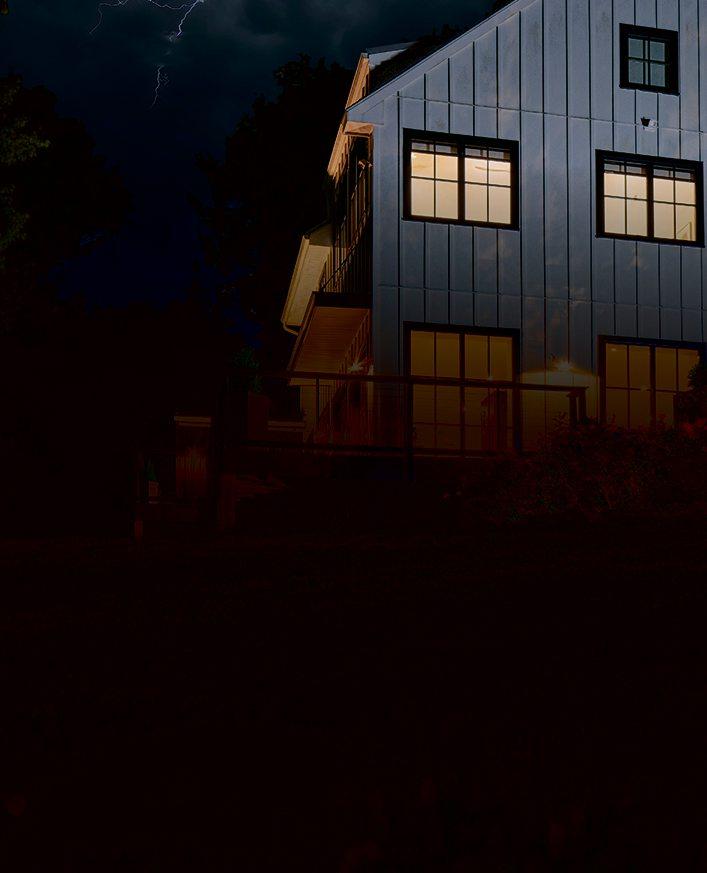



MANY ADULTS FIND THEMSELVES TAPPED OUT CARING FOR BOTH PARENTS AND KIDSBy Susan Shultz
egan says goodbye to her young children, 5 and 3, who are inconsolable that mommy is leaving overnight.
Amy says goodbye to her teenage son, making sure he has enough to eat in the fridge, and thinks of her oldest away at college.
Susan says goodbye to her two high schoolers, ensuring they have rides home from after-school activities and that there’s a baked ziti ready to bake for dinner
All of them are heading to New York City to see their mom, who is suffering from Alzheimer’s Disease and recovering from hip surgery. The facility she’s in isn’t top notch, so the women have made it a priority to visit and check on her as much as possible.
These three live the definition of the “Sandwich Generation” – adults, mostly women, who find themselves caring for both their parents and children of various ages at the same time, while rarely finding time to take care of themselves
According to the American Psychological Association, the age span of the Sandwich Generation can run from ages 35 to 54, while some others begin it at age 40. The APA suggests that mothers often put others’ needs before their own, and urge those feeling the stress of this age to take care of themselves as well
In March, The Washington Post reported that the Sandwich Generation is only getting more burdened, citing both the longer lifespans of adults and the challenges of today’s economy. Often, the middle generation is taking care of both their parents and their young adult children even longer
The American Association of Retired Persons also notes that those finding themselves in this “sandwich” can be varied as to who they are caring for. Some may even have an aging parent and grandparent, or a young adult child with special needs. Readmorehere:washingtonpost.com/parenting/2023/03/22/care-
TheNationalLibrary of Medicine offered some statistics on theSandwich Generation in November 2022. Of adultchild caregivers of parents, nearly 25 percent(or 2. 5million) also caredfor aminor child.
More Sandwich Generation caregivers (23.5percent)reported financialdifficultiesthannon-sandwichcaregivers(12.2 percent),and 44.1 percentofsandwichcaregivers reported having more emotional stress than 32.2 percentof non-sandwich caregivers
Thestatreport’sconclusion said that thosesandwiched betweendependents provided similarlyintense caregiving than those withoutthe same living scenario. It wasalsoconcluded that Sandwich Generation caregivers reported more caregiving-related financial andemotional stress and caregiving overload. Readmore athttps://pubmed.ncbi.nlm.nih. gov/36427297/
natedfor seniors, especially if the caregiver doesn’tlivenearby.
Readmoreataarp.com/caregiving.
OTHERQUICK TIPS: Keepupwithwellnessappointments: Do notpostponemedical, dental,orother kindsofregular wellness checks and/or vaccinations tocarefor others.There’s areason flight attendants tell youtoput on your oxygen mask first–you can’t help anyone if youare sick.
Takeapersonalday: Whether
“According to theAmerican PsychologicalAssociation, theage span of theSandwich Generation canrun from ages 35 to 54,while some others beginitatage 40.”
In manyofthe situations that requirefull-timeattention to aloved one, live-in aids or companions arethe most cost-beneficial option.
Inthismodalityofassistance,the aid movesinwith theclient forsomemanydaysina row.Live-in aids areallowedtohavesomefreetimeand sleepinghours, whichmakeita more affordable nonmedical home caresolution than hourly rates.
It is recommended when theclient needs full assistance with activities of daily living throughout theday but can sleep thewhole night,without requiringassistance during those hours. Activities of daily livingare theonesthat theclient must performtolive anormal life, suchasfeeding, toileting, walking, andbathing. If assistance is needed duringthe night theaid can still assist
An aid or companion should be readytohelp when thepatient doesn’t have balance or mobilitytoexecutethose activities without assistance.Itisalso agood option in the earlytomid-stages of memory decline, to makesurethat theperson stays safeand comfortableathome.ItisnotrecommendedtoleaveanAlzheimer’spatientunattended forexample. Live-in aids mayhelp avoid acrisis in thehome.
Whenoptingforlive-inaids,itisimportanttopayattentiontosomedetails.Inmostcases, you will prefer an agency that can maintain thecontinuityofthe sameaid fordaysto weeksata time. That ensures theintegrityofthe plan while avoidingaid changes that can agitatethe client,particularly when they suffer from memory issues.
TheAARPofferssomerecommendations to alleviatethe physical andemotional burdensofdouble-sided caregiving: Avoidtheslowcreepofresponsibilities: It happensbeforeone realizes it.You help outanailingparentand then little by little youtakemoreon. Andoften,the more youare theone to call themoreitisassumed you will take care of it.
Providecarebyneedandnot‘fairness:’ Moms in particular feel this challenge, beingcompelled to spend equaltimeand energy with their parent or grandparentaswiththeir spouse or children.There areonlyso many hoursinthe day.
Learntodelegate: Setappropriate expectations andlearn to askfor help from otherfamilymembers or communityresources.There are many communityresources desig-
you’re afull-time employee or just afull-time caregiver, mentally and physically,takeaday to yourself once in awhile.Readabook, sleep, getapedicure, go to themovies, or just take awalk. Shut your brainoff.
Talkitout: Whetherit’syour spouse, afriend, atherapist,orarelative, talk aboutyourstresses. Even if there’snoimmediate solution,it helps to at leastget it off your chest.
Askforhelponbothsides: Askfor helpwithrides forthe kids,ask your neighbor to pick up some itemsfrom thegrocery store, or askyourspouse to fill thecar with gasbeforeyou have to make atrip. Enlist atrusted neighbor as your ally foryouraging parenttocheck on them occasionally. Don’tbeafraidtoask forhelp.
Cutyourselfsomeslack: No oneis perfect, andnoone is asuperhero. Tell yourself youare doingthe best youcan,and that’s allyou cando.
Formoretipsandbattlingthe burdensoftheSandwichGeneration visitMentalHealthFirstAid.org.
Eventually,everylive-inaidwillneedareplacementforafewdays.Thatiscrucialtoavoid burnout,whichcould be riskyfor both, theclient andthe aid. Theagency should be able to provide thereplacement seamlessly,asmuchaspossible. Having consistency in the replacementswill also help to optimizethe development adhering to theplan.
Somepeople trytomakearrangements directly with apotential aid, without the mediationofthe staff of thein-homeagencies, in what is usually called “private duty” aids. That can be ariskyidea.
With this sortofprivate arrangement,you maybeincurring costs youdon’t see at first. That happens because theclient will be still responsible forpayingminimum wage, overtime, workerscompensation, unemployment,and other insurance.The client may nothaveinsurance fordamages, accidents andother liabilitylikeincometax.
Thefamily of thepatient will be responsible formakingsurethat theaid has theneeded hours of rest andthat theseare documented. They also will have to makesurethat the aid has thwappropriatedaysoff
Anagencywillbefullyresponsibleforallaspectsoftheaidwhenalive-inisneeded.They will calculatethe overtimeintothe fees, so thereare no surcharge surprises. Unlikea privatedutysituation,iftheprivateduteyaidbecomesillorhasapersonalemergency,an agency has otherheart felt liveinaids readytosubstitute.
The right home agency will offer assistance plans that aredesignedspecifically foreach individual. Each person is different andmight requiredifferent levels of skill, from afew hours aweek,tofull-timeattention
Theywillalsohavetheiraidsbackgroundcheckedinthe50stateswithaseven-yearlook back. Reference verified andwill team with thefamily to strivefor thebest outcomes.

CelebrateYour Golden Yearsat
EvergreenCrossings!
Redefineyourgoldenyears in acommunity activities arespecially designedtocuratea fulfilling retirement lifestyle without the
Tour Today!
Experience ourSignature FreedomDining programfor yourself! Schedule aprivatetourand be
